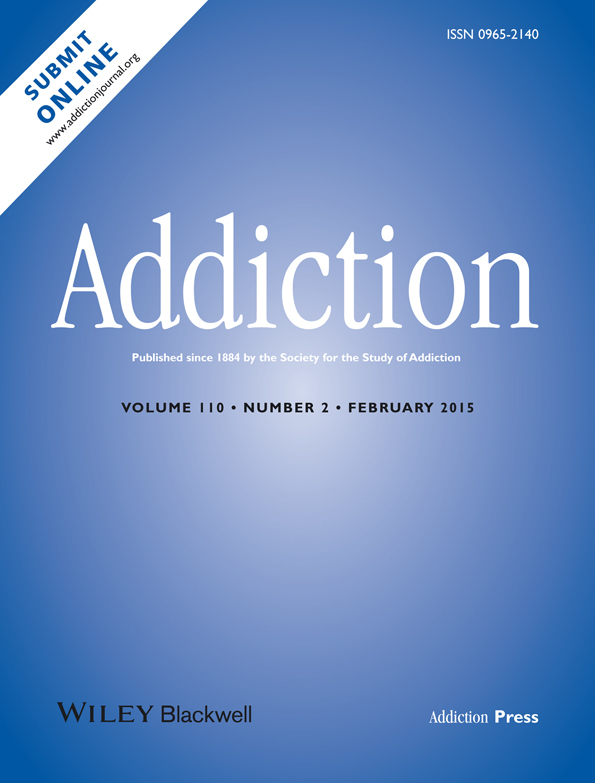Validation and performance of the Alcohol, Smoking and Substance Involvement Screening Test (ASSIST) among adolescent primary care patients
Abstract
Background and Aims
The World Health Organization's Alcohol, Smoking and Substance Involvement Screening Test (ASSIST) has strong support as a clinical screening tool and research instrument, but has only been validated with adults. This study evaluated the ASSIST and ASSIST-Lite in an adolescent population.
Design
Internal consistency, concurrent validity, discriminant validity and diagnostic accuracy were examined for tobacco, alcohol and cannabis ASSIST scores. An abbreviated version (the ASSIST-Lite) was evaluated for cannabis.
Setting
Three community health centers in Baltimore, MD, USA.
Participants
A total of 525 primary care patients, ages 12–17 years.
Measurements
Measures included the ASSIST, the CRAFFT screening tool and items from the Composite International Diagnostic Interview (CIDI) corresponding to substance use disorder criteria in the Diagnostic and Statistical Manual of Mental Disorders, 5th edition.
Findings
The ASSIST had good internal consistency (α = 0.68–0.88), good concurrent validity with the CRAFFT (r = 0.41–0.76; P < 0.001), and was able to discriminate between gradations of cannabis problem severity. In receiver operating characteristics analysis of optimal clinical cut-points, the ASSIST accurately identified tobacco, alcohol and cannabis use disorders (sensitivities = 95–100%; specificities = 79–93%; area under the curve [AUC] = 0.90–0.94), but did so at minimally low cut-points (indicative of any use in the past 3 months). The ASSIST-Lite performed similarly to the ASSIST in identifying cannabis use disorders (sensitivity = 96%; specificity = 88%; AUC = 0.92), also at a minimally low cut-point. However, confirmatory factor analysis of the ASSIST indicated poor model fit.
Conclusions
The Alcohol, Smoking and Substance Involvement Screening Test (ASSIST) is promising as a research and screening/brief assessment tool with adolescents, but revisions to clinical risk thresholds are warranted. The ASSIST-Lite is sufficiently informative for rapid clinical screening of adolescents for cannabis use disorders.




